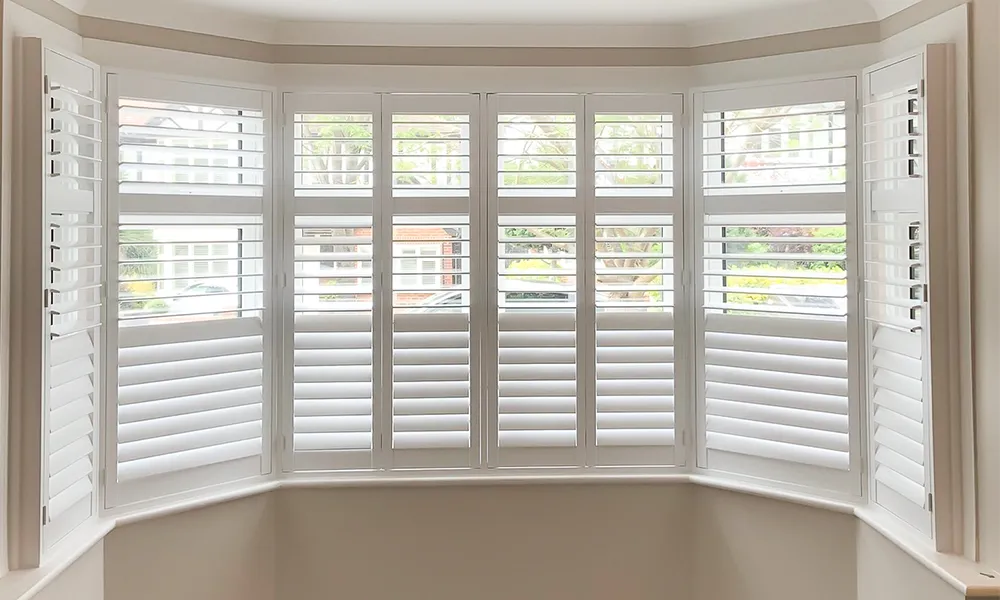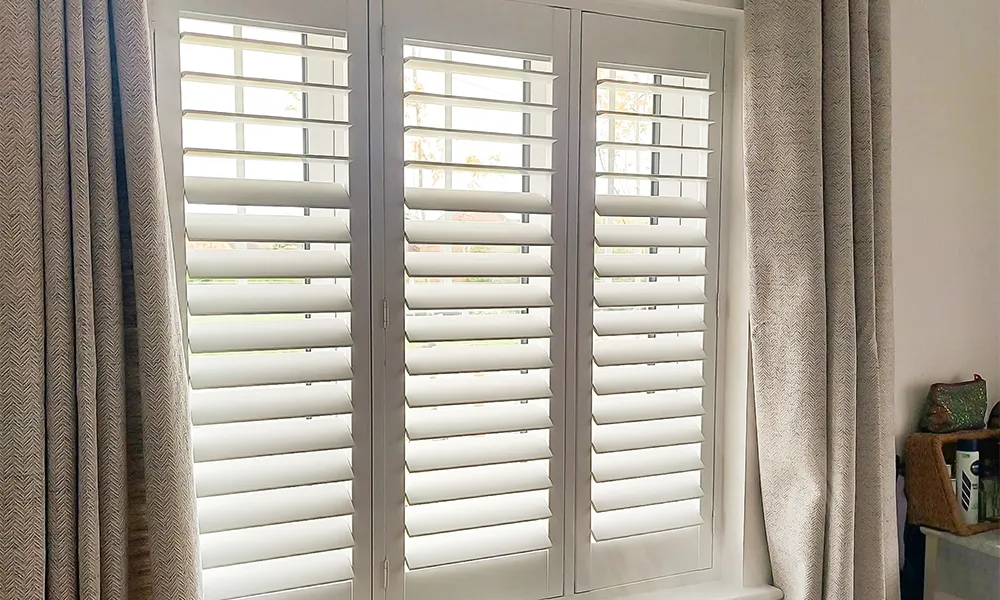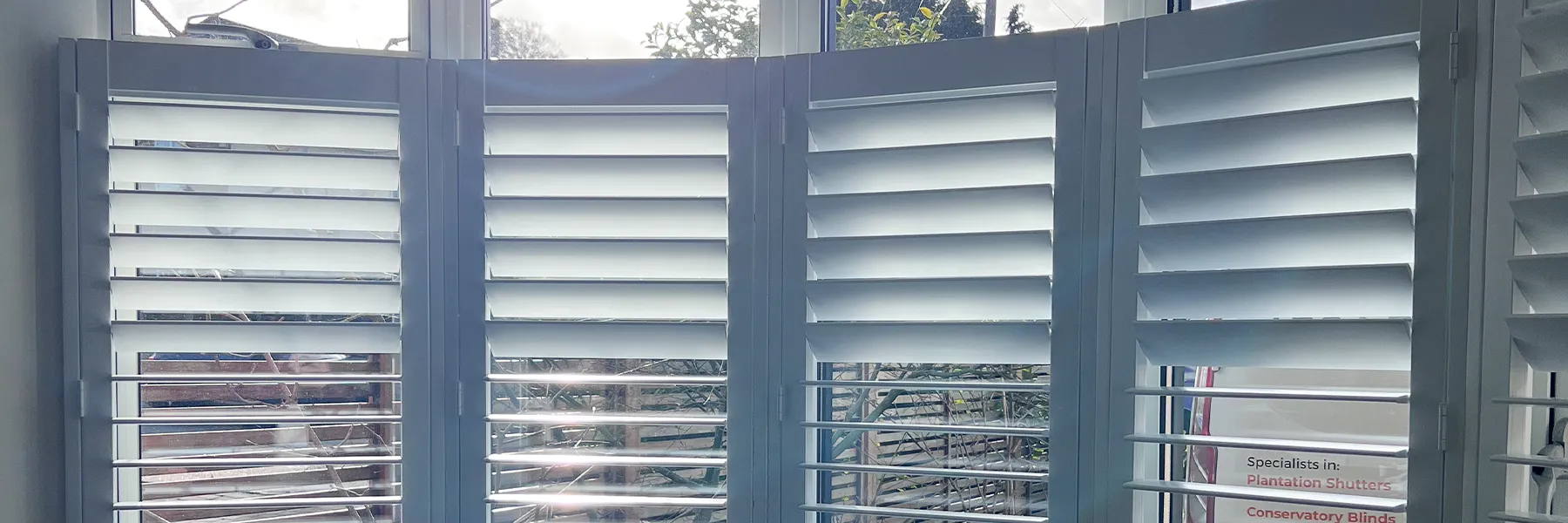Plantation Shutters with a Hidden Split?
As we’ve said on multiple occasions plantation shutters come with multiple customisation options that really tailor the shutter to your home. Today we’re talking about why you may want a hidden split in your shutters – featuring photos from our recent installations in Haywards Heath and Bromley.

Bay window shutters with a mid rail and hidden split
Aside from demonstrating how beautiful shutters look on this curved bay, the above photo best illustrates the benefits of a hidden split. Can you see it? On the ground floor of this home, the louvres at the tops sections of the window are horizontal, letting in as much light as possible, but the louvres at the bottom are slightly closed – the louvres are split halfway down under the midrail of this bay window. However, if the whole shutter were completely closed, or completely open, the split wouldn’t be apparent – thus a hidden split.
Plantation shutters with a split are usually found on full-height shutters as smaller shutters are usually flexible enough without the additional split. Especially popular on larger windows, a hidden split adds flexibility and control to places where the direction and amount of light fluctuate throughout the day.
A split can be added at any height within a shutter panel for no extra cost – you could even split your shutter in multiple places if you wanted to. The point of this addition is to decrease the trade-off between light and privacy – in the bedroom above you can close the bottom of the window when getting dressed or sleeping while the top third of the window remains open as an early morning alarm clock.
However, although adding a hidden split will not increase the cost of your shutters having a hidden tilt rod will – and as you can see most customers do choose to have a hidden tilt rod along with their hidden split. What’s a visible tilt rod? You might hear it referred to as ‘the stick in the middle’ which you can see on most classic plantation shutter installations. The additional cost is incurred as the mechanism that moves the louvres is built into the frame of the window which is more labour-intensive than attaching a tilt rod.

shutters on a flat window with hidden split louvres
The most usual use of a hidden split in plantation shutters is to keep the bottom of the room hidden from passers-by. Hidden splits can be put in at just the right height to conceal seated guests and you can tilt the louvers to angle the light into the room rather than closing it completely, as you can see in the photo above.
As well as the hidden tilt mechanism, the hidden split can be paired with our other tilt systems. This includes the center tilt rod (sitting centrally on the panel front), offset tilt (sitting to one side of the panel) and the most popular, Easy Tilt which is a built-in system. The Easy tilt offers a tidier finish, one that is most popular for larger windows and panels.
Don’t like the hidden tilt system? You can still break up your shutters – mid-rails, cafe-style shutters and tier-on-tier shutters are all solutions that give you greater control over how the light from your shutters enters the home. Our range is so versatile that you are bound to find a shutter style that suits your home and windows alike.
Not sure if a hidden split is right for your windows? We offer a free measure and consultation service which allows us to take detailed measurements of your windows and make any suggestions we believe are appropriate based on the style of your windows and your personal concerns.
Book your free consultation today. Click here.
For inspiration, you can also keep up to date with our latest news by following us on Instagram, X and Facebook.

